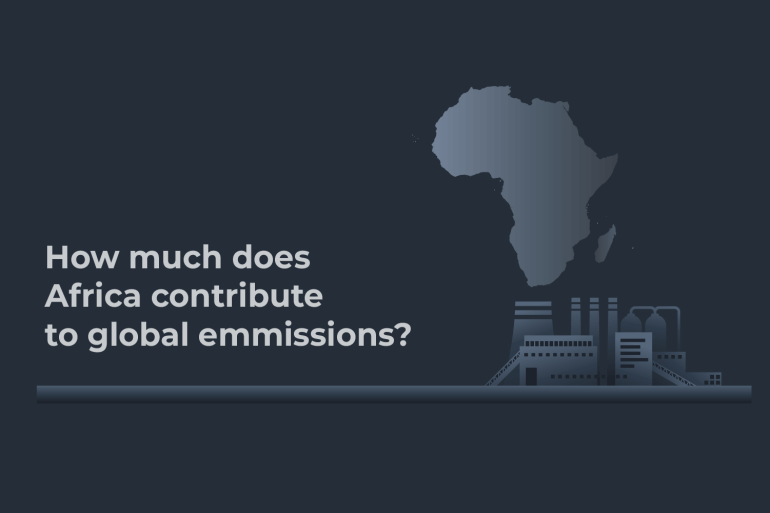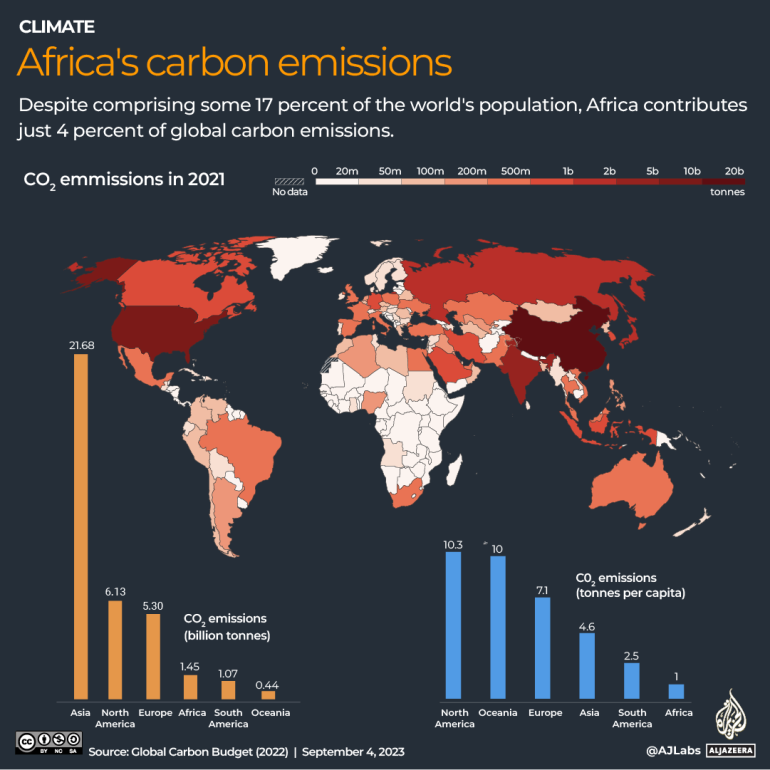How much does Africa contribute to global carbon emissions?
Africa contributes just 4 percent of global carbon emissions despite being the continent that will suffer the most from climate change.

African leaders and delegates are meeting in Nairobi, Kenya this week for the continent’s first climate summit.
The 2023 African Climate Summit, from September 4 to 6 and co-hosted by the African Union, will cover critical climate issues facing African nations, as well as climate finance solutions and green growth across the continent of some 1.4 billion people.
Keep reading
list of 4 itemsAsia bears biggest climate-change brunt amid extreme weather: WMO
Photos: Highest-level rainstorm warning issued in south China’s Guangdong
Europe endured record number of ‘extreme heat stress’ days in 2023
Africa is the continent most vulnerable to the effects of climate change. According to the International Rescue Committee, out of the 10 countries most vulnerable to climate disaster, seven are in Africa.
How much does Africa contribute to global emissions?
Carbon dioxide (CO2), the predominant greenhouse gas, is emitted from the combustion of fossil fuels like oil, coal, and gas, as well as from deforestation and cement production.
CO2 emissions contribute to the rise in global surface temperatures, leading to unpredictable weather conditions such as drought, floods, heatwaves and tropical cyclones.
In 2021, some 37.12 billion tonnes of CO2 was emitted across the globe. According to Oxfam, the richest 10 percent of the world’s population is responsible for more than half of all carbon emissions.
Africa’s carbon emissions are dwarfed by the emissions of other continents. At 11.47 billion tonnes, China is the world’s largest polluter, followed by the United States (5 billion tonnes), India (2.7 billion tonnes), Russia (1.75 billion tonnes) and Japan (1.07 billion tonnes).
Comprising about 17 percent of the world’s population, Africa contributes just 4 percent of global carbon emissions at 1.45 billion tonnes.

On a per capita basis, Africa has the lowest emissions out of all continents with an average of 1 tonne of CO2 emitted annually by each individual, followed by South America (2.5 tonnes), Asia (4.6 tonnes), Europe (7.1 tonnes), Oceania (10 tonnes) and North America (10.3 tonnes).
To put that in perspective, an average American or Australian emits as much CO2 in a month as an individual in Africa does in a year.
Which countries are Africa’s leading carbon emitters?
Within Africa, more than 60 percent of the continent’s carbon emissions are produced by just three countries – South Africa, contributing 435.9 million tonnes, Egypt, with 249.6 million tonnes, and Algeria, responsible for 176.2 million tonnes.
South Africa is one of the world’s most coal-dependent countries, with nearly 85 percent of its CO2 emissions coming from coal.
On a per capita basis, oil-producing country Libya has the continent’s highest CO2 emissions.
Conversely, many of the poorest countries across sub-Saharan Africa – such as the Democratic Republic of the Congo (DRC), Somalia and the Central African Republic – have the lowest average CO2 footprints at about 0.1 tonnes per year.
The table below provides a breakdown of total carbon emissions and CO2 emissions per capita for each African country. Use the search bar to find your country.